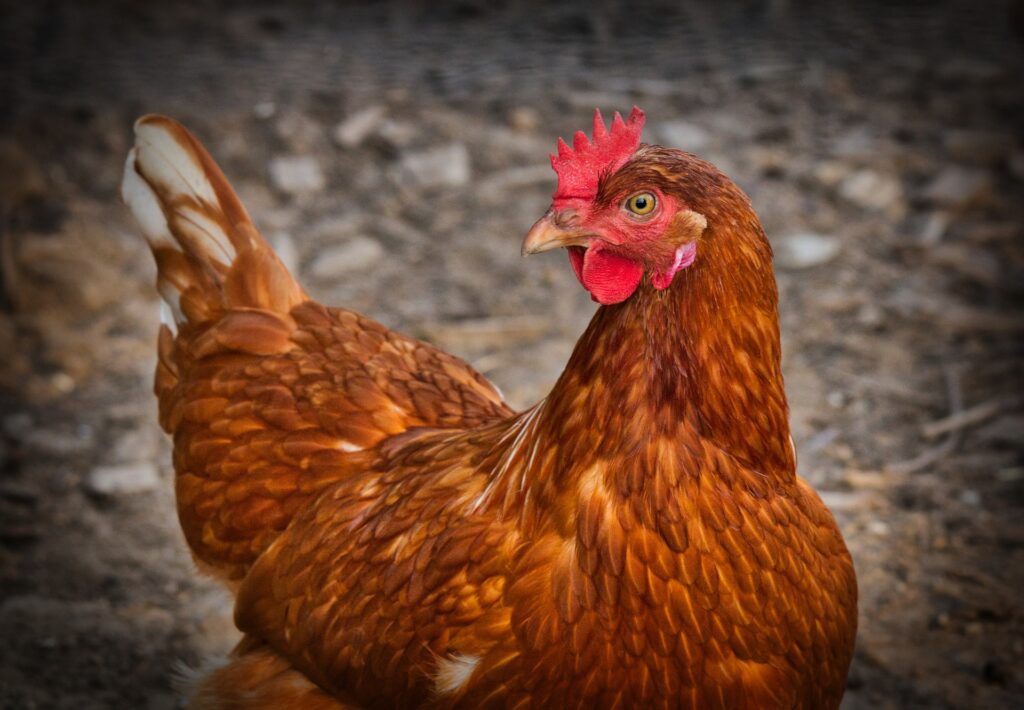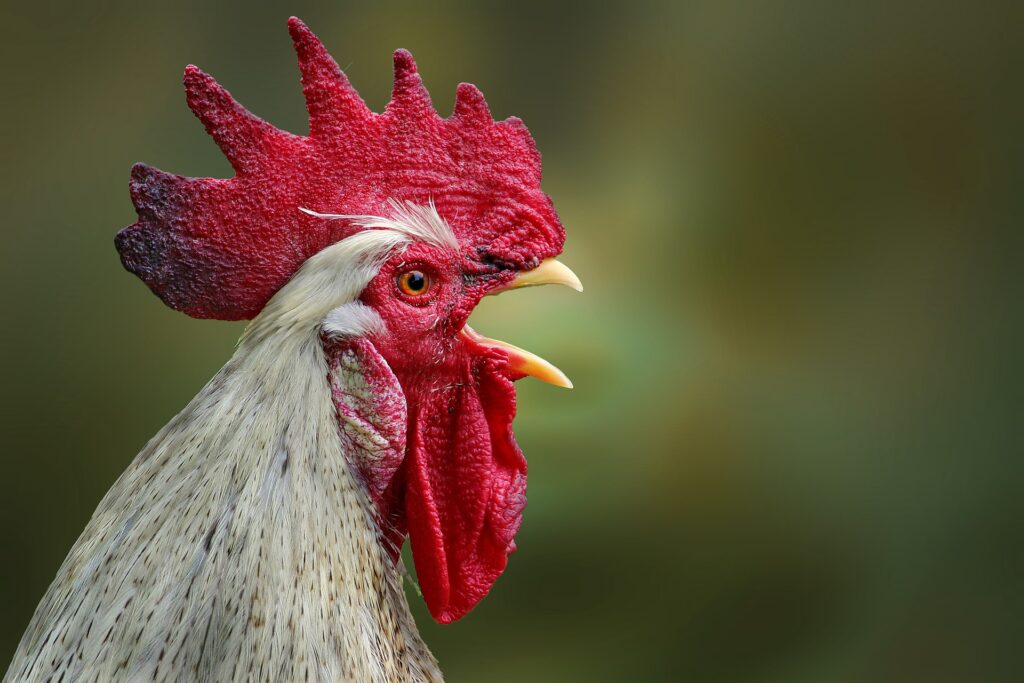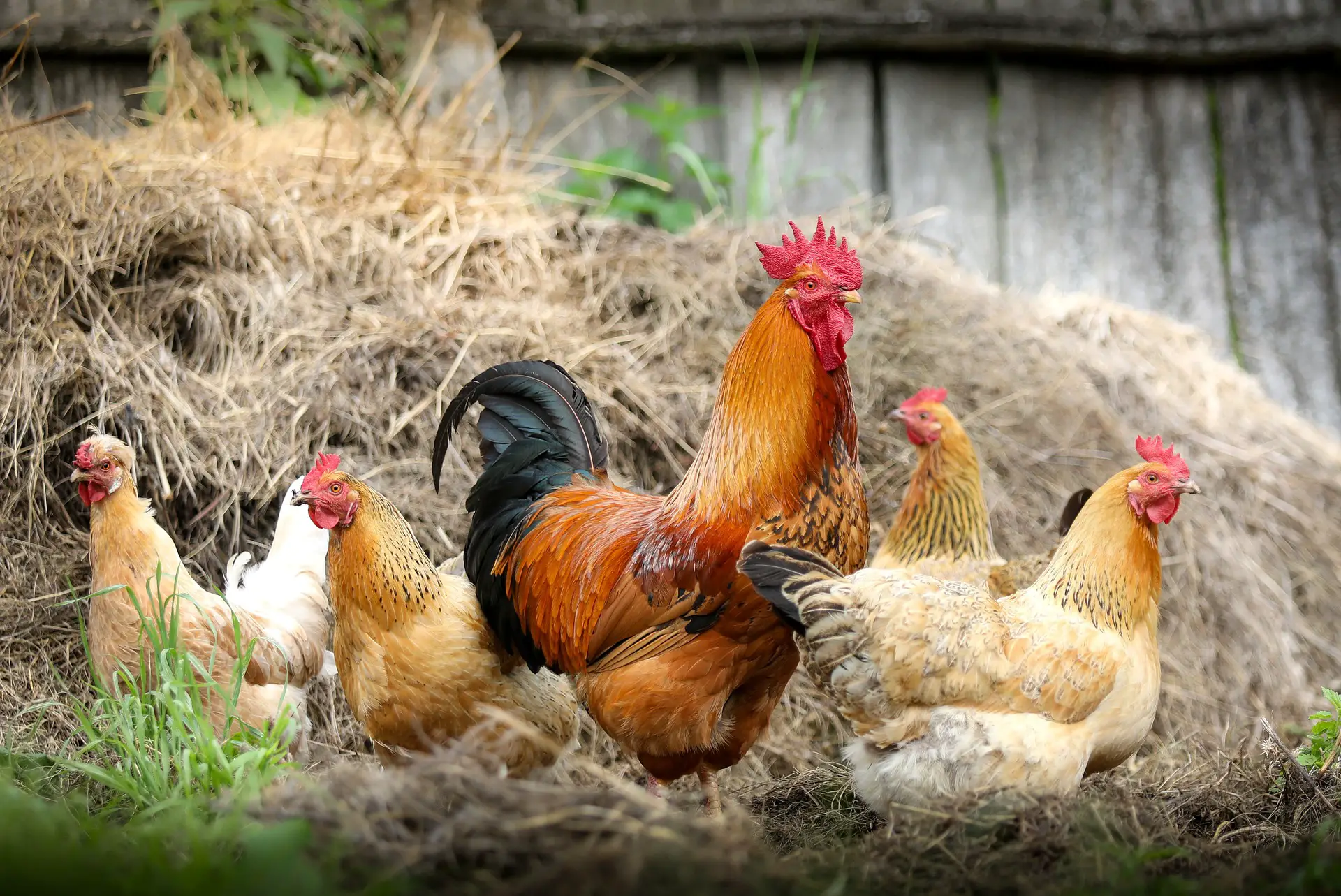As for distinguishing between a chicken hen and a rooster, it is worth noting that many differences are not immediately apparent after a chick hatches and that it depends on the breed of chicken you have when gender can be determined. We will take a look at the differences between a chicken hen and a rooster.
You may also want to read about keeping chickens for eggs.
5 easily recognized physical differences between hens and roosters
Neck feathers
One way to determine the sex of a chicken hen is to look at their feathers, particularly their neck feathers. Neck feathers are the feathers around a chicken’s neck, where a clear difference can often be observed between roosters and hens. What will be noticeable is that roosters have long, pointed and thin neck hairs that stand upright. This allows a rooster to appear larger when coming face to face with a rival. The neck feathers of hens are smaller, rounder and softer.
Are crescent feathers visible?
You can also tell roosters and hens apart by looking at your chickens’ tail feathers.
Saddle feathers in roosters are tail feathers that extend from the back and actually sit in front of the tail. Both hens and roosters have saddle feathers, but in hens they are rounder than in roosters. Their saddle feathers are also longer and pointier.
And finally, roosters have sickle feathers, feathers that are not present in hens. Crescent feathers are the long, curved feathers that protrude from the tail of roosters.

A chicken hen has smaller combs and wattles. The picture above shows a chicken hen and below shows a rooster.

Legs
Roosters tend to have sturdier, thicker legs compared to hens. This comes in handy when roosters need to defend their plumage. Later in this blog, we will discuss behavioral differences between roosters and hens in more detail.
Spurs, the part of the leg that resembles a horn, can also help distinguish between hens and roosters. Spurs are located on the back of hens’ legs, and while they are not exclusive to roosters, they are more common in roosters than in hens. A rooster’s spurs can be several inches long and are sharper than a hen’s, if at all.
Combs and wattles
Both hens and roosters have combs and wattles, with the comb located on top of the head and the wattles hanging below the chin. The appearance of the comb and wattles of chickens varies by breed, but generally the sex of a chick can be determined by looking at the comb. Both roosters and hens have red combs, but a hen’s comb is not as bright and large as a rooster’s, which is often more present and waxy to the touch.
As for the wattles, those of hens are smaller than those of roosters. Like the comb, a rooster’s wattles will usually be brighter in color than those of hens.
Do they lay eggs?
If a hen lays an egg, then it is obvious. Whatever its external or behavioral characteristics, if a hen lays an egg, it is indisputably a hen.
What are the behavioral differences between hens and roosters?
Cock vs. hen: behavior
We’ve looked at the external differences between hens and roosters, but what about behavioral characteristics that can help you figure out the sex of your birds?
One major difference relates to the sounds roosters and hens make to communicate. Roosters, of course, are known for their usually very loud crowing. They begin crowing when they are about five months old or when they reach adulthood. Roosters crow to signal their dominant presence, to mark their territory and as a mating ritual.
Although hens can also crow, this is much less common. When a hen crows it is often a lot quieter. When a hen crows, it usually indicates that she is at the top of the pecking order. A hen may also crow when there is no rooster present, whereas previously there was.
Sometimes a difference can be observed between hens and roosters in terms of aggression. In particular, roosters keep a close eye on their surroundings, ready to fight and protect their rook from danger. Usually, roosters are at the top of the pecking order and will gladly assert their dominance by fighting with other roosters. In a previous blog, we discussed aggressive behavior in roosters. As with other physical differences, the degree of aggression will depend on the breed of chicken you have. Certain breeds such as the asil, modern game and old english game, top the list of least friendly chicken breeds.


